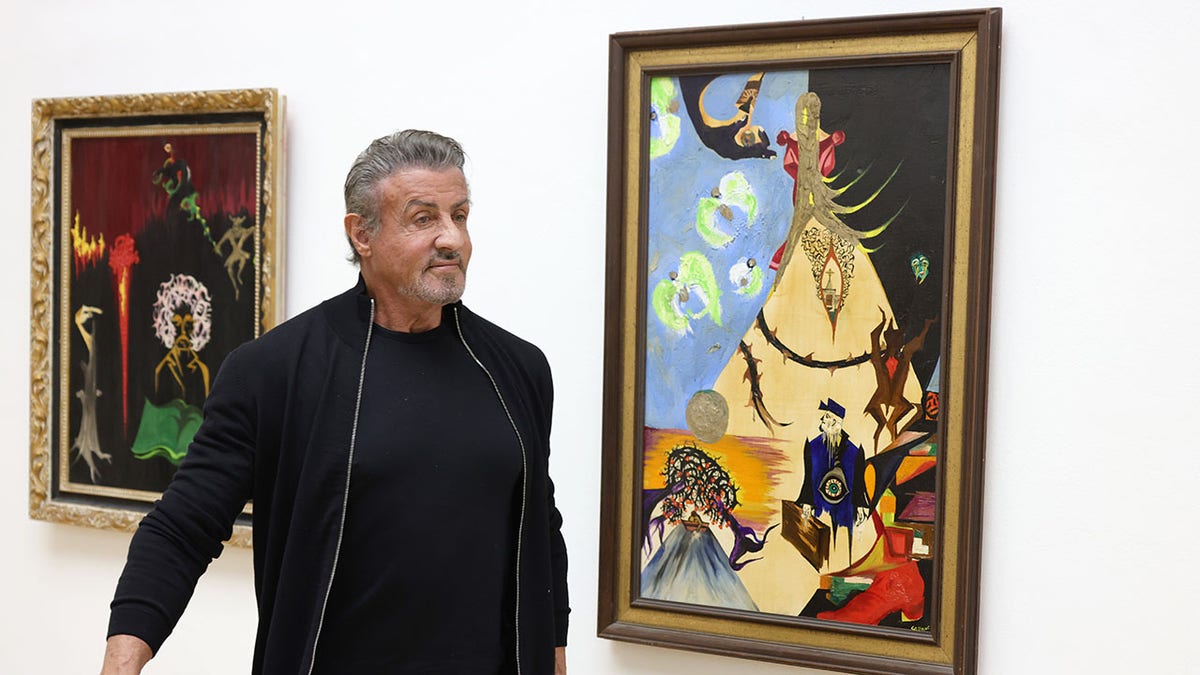Museum of the Bible's latest exhibit shows 'link between science and scriptures'
Fox News' chief religion correspondent Lauren Greene discusses NASA astronauts endorsement of the new museum on 'Fox News @ Night.'
Reading the detailed descriptions of works exhibited in art galleries makes viewers happy, according to a new study.
Visitors to a modern art museum displayed more "excitement" and "positivity" when they were able to read full descriptions of the artwork in front of them, than when merely seeing simple labels.
This suggests higher comprehension and a more satisfying aesthetic experience, the study found.
The results of the study showed that visitors lingered in front of artworks longer and exhibited more signs of excitement when given detailed descriptions of each piece, compared to seeing basic labels.
Said the study's lead author, Serena Castellotti of the University of Florence in Italy, "Improving the cultural and aesthetic experience of non-expert visitors is a critical task for art museums," as SWNS reported.

Sylvester Stallone reviews his painting during the opening of the exhibit featuring his artwork, "Sylvester Stallone - Retrospektive zum 75. Geburtstag" at Osthaus Museum Hagen on Dec. 3, 2021, in Hagen, Germany. A study done at a modern alert museum in Florence, Italy, found that detailed descriptions of artwork shown with the art itself worked best at captivating visitors — and helping them engage with the creative works on display. (Andreas Rentz/Getty Images)
"In this study," she also said, "we examined how museum-provided descriptions of art might influence a visitor’s experience of the art."
As part of the study, 30 university students visited the Roberto Casamonti Collection in Florence, a modern art museum, once — and they were given basic descriptions of each artwork.
About a month later, 10 participants returned and repeated their first visit exactly.
The effects might be specific to modern art, the researchers noted.
Meanwhile, the 20 other participants returned and were given more detailed descriptions of each piece of artwork, including its background and meaning, said, SWNS, a British news service.
INTEGRATING AI INTO MUSEUMS: EXPERT SAYS VISITORS MAY ONE DAY INTERACT WITH PEOPLE FROM HISTORY
Noted Castellotti, a PhD candidate in neuroscience, "The 20 experimental participants spent significantly more time viewing each artwork during their second museum visit — with new, detailed descriptions — as compared to their initial visit."

The Unclaimed Baggage Museum in Alabama has a set of silver spoons on display. Detailed descriptions of artwork in museums — as compared to just simple, short labels — worked well at keeping visitors more positively engaged, a new study found. (Unclaimed Baggage)
She also noted, "In contrast, the 10 control participants spent significantly less time in the museum on their second visit when given the same basic descriptions as before."
She said that the "experimental participants also exhibited physical signs of excitement — dilated pupils and increased skin electrodermal activity."
"Reading detailed information about artworks leads to psychophysiological and behavioral changes."
Castellotti also noted, "Experimental participants described themselves as experiencing more positive and fewer negative emotions during their second visit, and the artworks as more comprehensible and less complex," as SWNS reported.
TEXAS MUSEUM TO RETURN STOLEN ROMAN BUST AFTER WOMAN BOUGHT AT GOODWILL FOR $35
"However, they didn’t tend to change initial assessments of their aesthetic appreciation for each artwork," she said — "even after receiving the more detailed description."

Kids with toy lightsabers pose in front of "Star Wars" artwork at a museum exhibit of "Star Wars: In Concert at the Orleans Arena," on May 29, 2010, in Las Vegas, Nevada. A new study has found that museum visitors benefit from modern art labels with more detailed explanations — as opposed to simple and short labels — about the artwork, the technique used and the artist who created the work. (Getty Images)
The research team noted that the effects might be specific to modern art — which tends to be less familiar and perhaps less approachable for the average person than classical art.
CLICK HERE TO SIGN UP FOR OUR LIFESTYLE NEWSLETTER
Researchers said that their findings, published in the journal PLOS One, suggest that museum visitors might benefit from modern art labels with more detailed explanations about the artwork, the technique used and the artist who created the work.
CLICK HERE TO GET THE FOX NEWS APP
Castellotti also said, "Reading detailed information about artworks leads to psychophysiological and behavioral changes, suggesting higher comprehension and liking and a more satisfying aesthetic experience."























